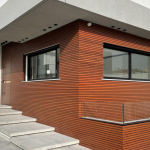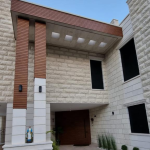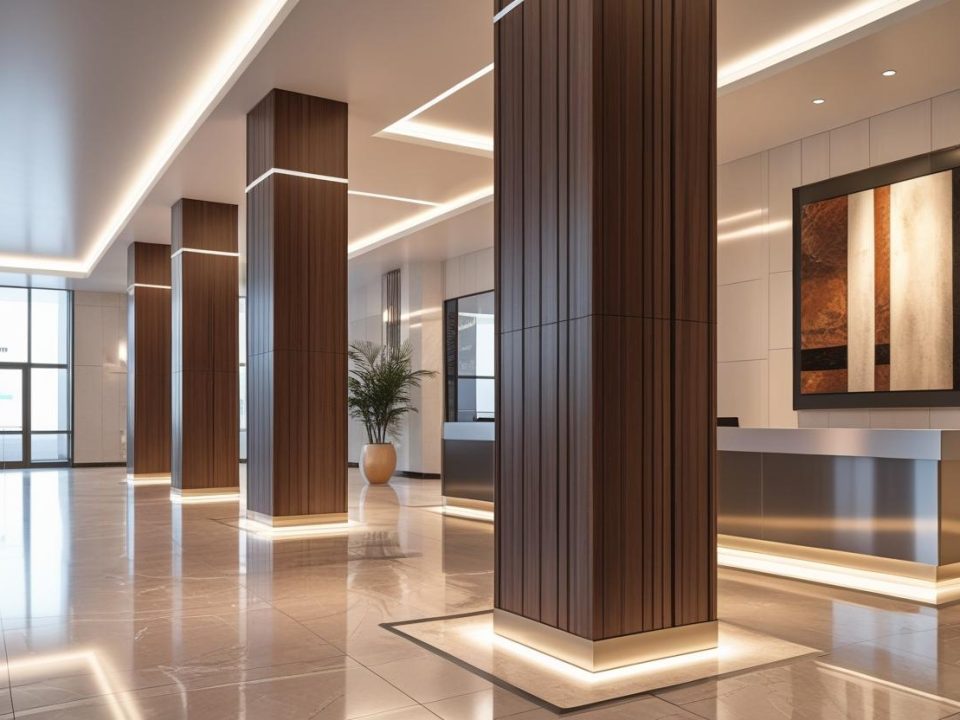
Comparative Analysis: Anodized vs. Powder Coated Aluminum Cladding

Aluminum Cladding in Public Buildings: How to Balance Aesthetics and Functionality

Welcome to our insightful exploration of aluminum cladding in the context of industrial buildings.
This versatile material has been a game-changer in construction, offering a blend of aesthetics, durability, and efficiency.
But, like any building solution, it comes with its set of challenges.
Let’s dive deep into the world of aluminum cladding, examining why it’s an excellent choice for industrial facilities and what considerations need to be made.
Introduction to Aluminum Cladding
Aluminum cladding involves covering a building’s exterior with aluminum materials to protect it from the elements while providing a modern, sleek appearance.
This method has gained popularity due to aluminum’s remarkable properties, such as its lightweight nature, durability, and resistance to corrosion.
Industrial buildings, in particular, can benefit significantly from these features, considering their unique demands and operational requirements.
Understanding aluminum cladding and its advantages is crucial for architects, builders, and facility managers planning to utilize this material in industrial settings.
It’s not just about improving aesthetics; it’s about enhancing the building’s overall performance and lifespan.
1. Durability and Longevity
One of the standout benefits of aluminum cladding is its exceptional durability. Industrial buildings, often exposed to harsh environmental conditions, require materials that can withstand the test of time.
Aluminum’s natural resistance to corrosion, rust, and weathering makes it an ideal choice for protecting the building’s structure and maintaining its appearance.
Furthermore, the longevity of aluminum cladding reduces the need for frequent replacements or repairs, ultimately leading to cost savings and reduced downtime for maintenance activities in industrial operations.
2. Lightweight Yet Strong
The lightweight nature of aluminum materials is a significant advantage, especially for large industrial facilities.
Aluminum cladding adds minimal weight to structures, reducing the load on foundations and supporting frameworks.
Despite its lightness, aluminum is incredibly strong and can support large panels and complex shapes, offering flexibility in design without compromising the building’s structural integrity.
This balance between weight and strength allows for more innovative architectural designs and can help speed up the construction process, making it a practical choice for fast-paced industrial projects.
3. Thermal Efficiency and Energy Savings
Aluminum cladding can contribute significantly to a building’s thermal efficiency.
When combined with proper insulation, aluminum sheet cladding can help maintain consistent indoor temperatures, reducing the reliance on heating and cooling systems.
This energy efficiency is particularly beneficial for industrial buildings, where controlling the climate can be costly due to their large size.
Investing in exterior aluminum cladding can lead to substantial energy savings over time, contributing to more sustainable and cost-effective operations for industrial facilities.
4. Aesthetics and Branding
While functionality is paramount in industrial settings, the aesthetic aspect cannot be ignored.
Aluminum cladding offers a modern and sleek appearance, transforming the traditional industrial building into a visually appealing structure.
This enhancement in appearance can be crucial for companies looking to strengthen their branding and corporate image.
The versatility of aluminum cladding allows for various finishes, colors, and designs, enabling businesses to customize the look of their facilities to align with their brand identity and values.
5. Fire Resistance and Safety
Safety is a top priority in any industrial environment, and aluminum cladding contributes positively to this area.
Aluminum materials are non-combustible, meaning they do not ignite or burn, which can be a critical feature in preventing fire spread in industrial complexes.
This inherent fire resistance of aluminum enhances the overall safety of the building and its occupants, providing peace of mind for business owners and facility managers.
Challenges of Using Aluminum Cladding in Industrial Buildings
Despite its many benefits, aluminum cladding also presents certain challenges.
The initial cost can be higher than other cladding materials, making budgeting a crucial consideration.
Additionally, while aluminum is corrosion-resistant, it can still be susceptible to galvanic corrosion when in contact with other metals, requiring careful planning and material selection.
Addressing these challenges involves thorough planning, budgeting, and adherence to proper installation practices to ensure that the benefits of aluminum cladding are fully realized without unforeseen complications.
Maintenance and Upkeep of Aluminum Cladding in Industrial Buildings
While aluminum cladding is low maintenance compared to other materials, it still requires regular upkeep to maintain its appearance and functionality.
Industrial environments can be particularly harsh, with exposure to chemicals, dust, and pollutants that can affect the cladding’s surface.
A regular maintenance schedule is essential to keep the cladding clean and in good condition, ensuring it continues to protect the building effectively and maintains its aesthetic appeal over time.
Environmental Considerations and Recycling
Environmental sustainability is increasingly important in the construction industry. Aluminum cladding scores well in this regard, as aluminum is 100% recyclable without loss of quality.
This recyclability reduces the environmental footprint of industrial buildings and contributes to more sustainable construction practices.
Furthermore, the energy efficiency provided by aluminum cladding can help industrial facilities reduce their energy consumption and carbon emissions, aligning with global environmental goals and potentially resulting in cost savings.
Installation and Technical Considerations of Aluminum Cladding in Industrial Buildings
Proper installation is crucial to maximize the benefits of aluminum cladding.
Technical considerations, such as thermal expansion, moisture control, and fastening systems, must be carefully planned and executed.
The expertise of experienced installers is essential to address these technical aspects, ensuring the cladding performs as intended and avoids common pitfalls.
Choosing the right contractor and engaging with them early in the design process can help mitigate installation challenges and ensure a smooth, successful application of aluminum cladding on industrial buildings.
Conclusion
In conclusion, aluminum cladding offers a host of benefits for industrial buildings, from enhancing durability and energy efficiency to improving aesthetics and safety.
However, navigating the challenges requires careful planning, expertise, and the right partners.
At GTO Aluminum, we specialize in providing top-quality aluminum cladding solutions tailored to the unique needs of industrial facilities.
Our team of experts is here to guide you through the selection, design, and installation processes, ensuring your aluminum cladding meets the highest standards of performance and aesthetics.
Whether you’re renovating an existing facility or constructing a new one, GTO Aluminum is your trusted partner in achieving a functional, efficient, and visually appealing industrial building.
Contact us today to explore how our aluminum cladding solutions can enhance your next project.




